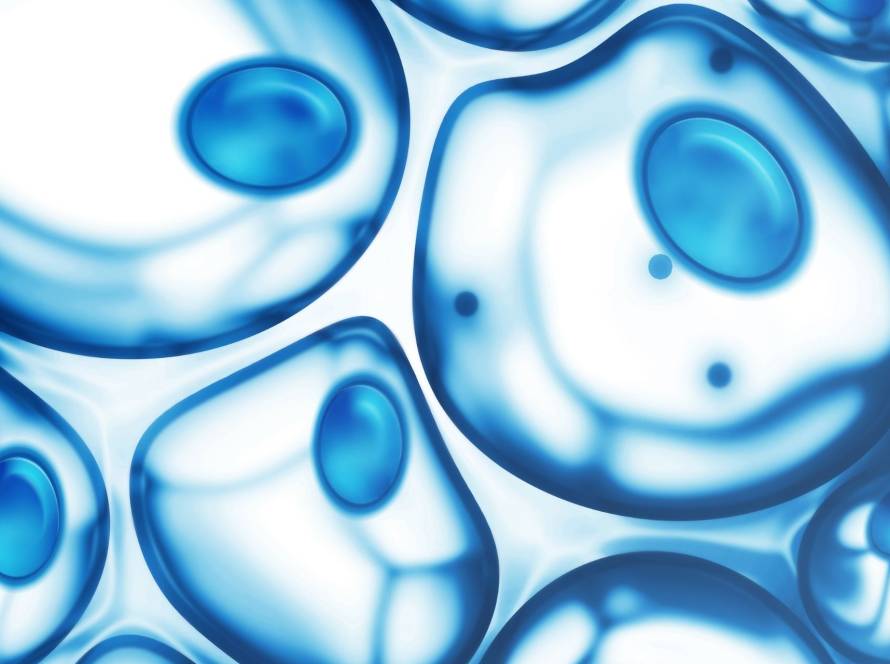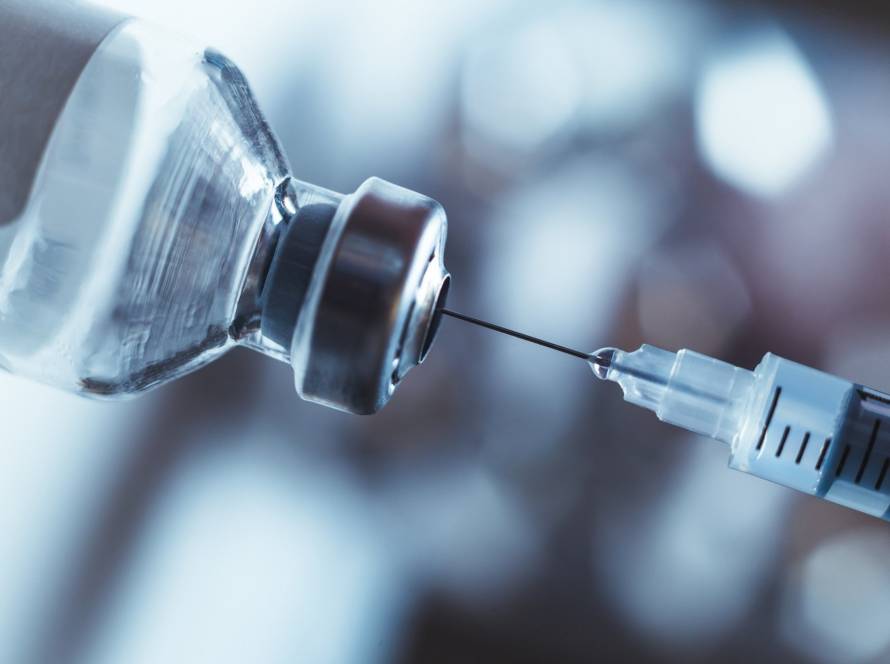As we age, our cells face increasing challenges in maintaining proteostasis.
The term “proteostasis” refers to the delicate balance that cells must strike to correctly produce, fold, and degrade proteins. When this balance is disturbed, proteins can misfold, accumulate, or degrade improperly, leading to a host of age-related diseases and contributing to the aging process itself.
In this article, we will explore how proteostasis relates to aging, the biological pathways involved and emerging research on supplements and interventions that may help support proteostasis for healthy aging.
What is proteostasis?
Proteostasis, also known as protein homeostasis, refers to the dynamic network of biological pathways and mechanisms responsible for maintaining the functional integrity of proteins in the cell.
Proteins are essential molecules that perform various tasks, from catalyzing biochemical reactions to providing structural support to cells and tissues. To function correctly, proteins must fold into specific three-dimensional structures. However, the process of folding proteins is error-prone, and even small mistakes can result in misfolded proteins, which can aggregate and disrupt cellular function.
Cells have evolved sophisticated mechanisms to manage protein quality control, including molecular chaperones, that assist in proper protein folding and proteolytic systems that degrade damaged or misfolded proteins. Together, these systems ensure that only properly folded, functional proteins are maintained, while damaged or misfolded proteins are removed.
The role of proteostasis in aging
As we age, the efficiency of proteostasis networks declines. This decline is thought to be one of the major contributors to aging and age-related diseases.
Proteins become more prone to misfolding and aggregation, as cells lose their ability to maintain proteostasis. These aggregated proteins can accumulate in tissues, contributing to diseases like Alzheimer’s, Parkinson’s and other neurodegenerative conditions.
Loss of proteostasis with age
Several factors contribute to the age-related decline in proteostasis:
- Reduced activity of molecular chaperones: molecular chaperones, such as heat shock proteins (HSPs), play a crucial role in assisting protein folding and preventing misfolded proteins from aggregating. With aging, the expression and function of these chaperones decrease, reducing the cell’s ability to manage protein misfolding.
- Impaired proteasome and autophagy systems: the ubiquitin-proteasome system (UPS) and autophagy-lysosome pathways are responsible for degrading damaged or misfolded proteins. Both of these systems become less efficient with age, leading to the accumulation of dysfunctional proteins.
- Oxidative stress: aging is associated with increased oxidative stress, which can damage proteins, making them more prone to misfolding. Oxidized proteins are more difficult to refold or degrade, further burdening the proteostasis network.
- Mitochondrial dysfunction: mitochondria are responsible for producing energy in cells, but their function declines with age. This dysfunction generates more reactive oxygen species (ROS), which can damage proteins and exacerbate proteostasis failure (source).
Proteostasis and age-related diseases
The failure of proteostasis has been linked to several age-related diseases, particularly neurodegenerative disorders.
Misfolded and aggregated proteins are hallmarks of diseases such as Alzheimer’s disease, Parkinson’s disease, and amyotrophic lateral sclerosis (ALS). In Alzheimer’s disease, for example, amyloid-beta plaques and tau tangles result from misfolded proteins accumulating in the brain, causing neuronal death and cognitive decline (CNS & Neurological Disorders).
Similarly, in Parkinson’s disease, misfolded alpha-synuclein proteins form aggregates known as Lewy bodies, which disrupt neuronal function (Perspectives in Medicine).
Beyond neurodegeneration, proteostasis disruption is implicated in other aging-related conditions, such as type 2 diabetes, cancer, and cardiovascular diseases (Annual Review of Biochemistry), further highlighting its central role in the aging process.
The biology of proteostasis
To understand how proteostasis is maintained and how it breaks down with age, it’s essential to explore the key biological systems involved.
Molecular chaperones
Molecular chaperones are proteins that assist other proteins in folding correctly, preventing aggregation, and facilitating the refolding or degradation of misfolded proteins. One of the most well-known families of chaperones is the heat shock proteins (HSPs). These proteins are upregulated in response to cellular stress, such as increased temperature or oxidative damage, and help to stabilize proteins in their proper folded state.
In aging organisms, the expression of HSPs decreases, reducing the capacity for cellular recovery from stress and leading to the accumulation of damaged proteins. Recent studies have explored strategies to upregulate chaperone activity as a potential intervention to restore proteostasis and promote longevity.
The Ubiquitin-Proteasome System (UPS)
The UPS is one of the cell’s primary systems for degrading damaged or misfolded proteins. In this system, damaged proteins are tagged with ubiquitin, a small protein that signals them for degradation by the proteasome, a large proteolytic complex. However, with age, the efficiency of the UPS declines, allowing damaged proteins to accumulate.
Research has shown that enhancing the function of the UPS can delay the onset of age-related diseases. In model organisms like Caenorhabditis elegans, boosting proteasome activity has been associated with increased lifespan and improved healthspan.
Autophagy-lysosome pathway
Autophagy is a cellular process where damaged proteins and organelles are engulfed by vesicles called autophagosomes and then degraded in the lysosome. This process is critical for clearing protein aggregates that are too large to be degraded by the UPS. However, autophagy also becomes less efficient with age, leading to the buildup of aggregated proteins and damaged organelles.
Recent studies have highlighted the role of autophagy in extending lifespan in various organisms. For instance, caloric restriction and intermittent fasting, both known to promote longevity, stimulate autophagy, suggesting that enhancing this pathway may help maintain proteostasis in aging cells.
Supplements and interventions for pupporting proteostasis
Given the central role of proteostasis in aging, researchers are investigating various supplements and interventions that could help support proteostasis and promote healthy aging.
1. Heat Shock Protein (HSP) Inducers
Heat shock proteins (HSPs) play a key role in maintaining proteostasis, especially under stress conditions. Research suggests that certain compounds may help induce the expression of HSPs, potentially improving proteostasis in aging cells.
- Curcumin: the active compound in turmeric, has been shown to upregulate HSP expression and protect against protein misfolding and aggregation in several studies.
- Quercetin: a flavonoid found in various fruits and vegetables, also induces HSPs and has demonstrated neuroprotective effects by preventing protein aggregation.
2. Autophagy enhancers
As mentioned earlier, autophagy plays a vital role in clearing aggregated proteins, and its decline with age contributes to proteostasis failure. Certain supplements and lifestyle interventions have been shown to enhance autophagy.
- Rapamycin: a well-known inhibitor of the mTOR pathway, which regulates autophagy. Inhibition of mTOR by rapamycin enhances autophagy and has been shown to extend lifespan in animal models.
- Fasting and caloric restriction: both intermittent fasting and caloric restriction have been found to stimulate autophagy and improve proteostasis. These dietary interventions have been linked to increased lifespan and delayed onset of age-related diseases in various organisms.
3. Proteasome activators
Enhancing proteasome activity is another strategy to maintain proteostasis and support healthy aging. Research into proteasome activators is still in its early stages, but certain compounds have shown promise in animal studies.
- Urolithin A: a compound derived from the metabolism of ellagitannins, which are found in foods like pomegranates. It has been shown to enhance proteasome activity and improve mitochondrial function, both of which are critical for proteostasis.
4. Antioxidants
Oxidative stress contributes significantly to proteostasis failure by damaging proteins and other cellular structures. Antioxidant supplements may help reduce oxidative stress and protect proteins from damage, thereby supporting proteostasis.
- Coenzyme Q10 (CoQ10): CoQ10 is a potent antioxidant that plays a crucial role in mitochondrial function. Supplementation with CoQ10 has been shown to reduce oxidative damage and improve proteostasis in aging cells.
- N-Acetyl Cysteine (NAC): NAC is a precursor to glutathione, one of the body’s most important antioxidants. It helps to mitigate oxidative stress and has been shown to improve proteostasis and reduce the accumulation of misfolded proteins.
5. Mitochondrial support
Mitochondria, the powerhouses of the cell, play a crucial role in proteostasis. Supporting mitochondrial function may help reduce oxidative stress and prevent the decline in proteostasis associated with aging.
- PQQ (Pyrroloquinoline quinone): PQQ is a mitochondrial enhancer that has been shown to stimulate mitochondrial biogenesis and reduce oxidative stress. Research suggests that PQQ supplementation may help maintain proteostasis in aging cells.
Maintaining proteostasis for longevity
Proteostasis is a critical aspect of healthy aging, and its decline is a key contributor to the aging process and the development of age-related diseases. By understanding the mechanisms that regulate proteostasis and identifying interventions to support these systems, we can take proactive steps toward healthier, longer lives.


